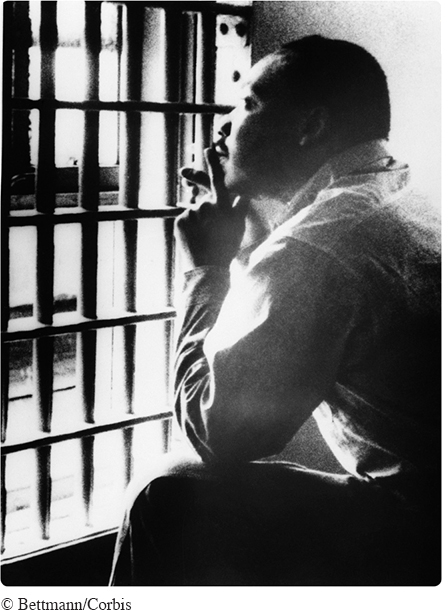What Is a Rhetorical Analysis?
100
When you write a rhetorical analysis, you systematically examine the strategies a writer employs to achieve his or her purpose. In the process, you explain how these strategies work together to create an effective (or ineffective) argument. To carry out this task, you consider the argument’s rhetorical situation, the writer’s means of persuasion, and the rhetorical strategies that the writer uses.
OVERVIEW: “LETTER FROM BIRMINGHAM JAIL” BY MARTIN LUTHER KING JR.
Here and throughout the rest of this chapter, we will be analyzing “Letter from Birmingham Jail” by Martin Luther King Jr., which can be found online.
In 1963, civil rights leader Martin Luther King Jr. organized a series of nonviolent demonstrations to protest the climate of segregation that existed in Birmingham, Alabama. He and his followers met opposition not only from white moderates but also from some African-
King knew that the world was watching and that his response to the white clergymen would have both national and international significance. As a result, he used a variety of rhetorical strategies to convince readers that his demands were both valid and understandable and that contrary to the opinions of some, his actions were well within the mainstream of American social and political thought. Today, King’s “Letter from Birmingham Jail” stands as a model of clear and highly effective argumentation.
101
